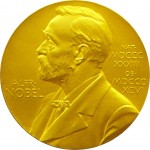If you know a few key inputs you can predict where the ball will land in a game of roulette using basic physics equations. Check out this abstract from a recent edition of the journal Chaos:
There have been several popular reports of various groups exploiting the deterministic nature of the game of roulette for profit. Moreover, through its history, the inherent determinism in the game of roulette has attracted the attention of many luminaries of chaos theory. In this paper, we provide a short review of that history and then set out to determine to what extent that determinism can really be exploited for profit. To do this, we provide a very simple model for the motion of a roulette wheel and ball and demonstrate that knowledge of initial position, velocity, and acceleration is sufficient to predict the outcome with adequate certainty to achieve a positive expected return. We describe two physically realizable systems to obtain this knowledge both incognito and in situ. The first system relies only on a mechanical count of rotation of the ball and the wheel to measure the relevant parameters. By applying these techniques to a standard casino-grade European roulette wheel, we demonstrate an expected return of at least 18%, well above the −2.7% expected of a random bet. With a more sophisticated, albeit more intrusive, system (mounting a digital camera above the wheel), we demonstrate a range of systematic and statistically significant biases which can be exploited to provide an improved guess of the outcome. Finally, our analysis demonstrates that even a very slight slant in the roulette table leads to a very pronounced bias which could be further exploited to substantially enhance returns.
Now go apply it and win tons of money!

